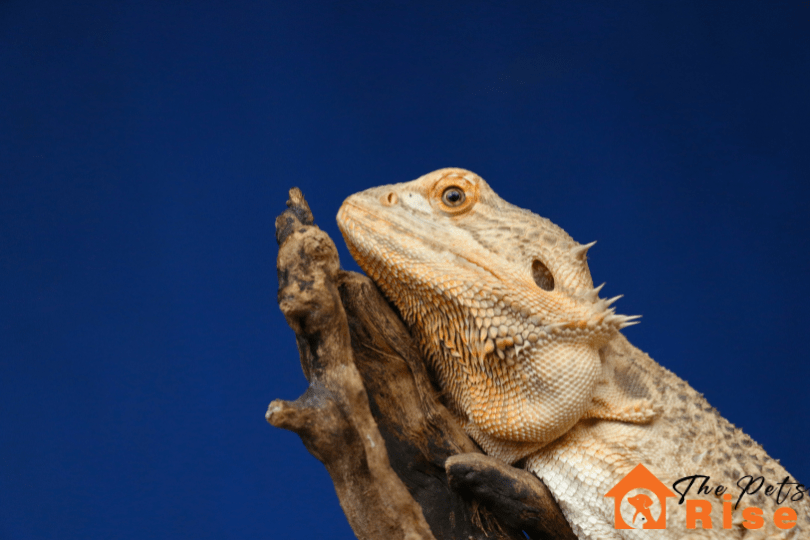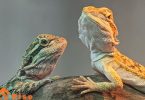Bearded dragon behavior understanding can be helpful in making you a good pet owner. Bearded dragons are one of the most popular pet lizards in the world. They are known for their friendly personalities and vibrant colors. But what else do we know about bearded dragons? In this article, we will explore the behavior of bearded dragons, from their social interactions to their diet and more.
Bearded dragons are social creatures who enjoy interacting with their owners and other animals. They are inquisitive and love to explore their environment. Bearded dragons are territorial and may become aggressive if they feel threatened. They are also known to be quite vocal, making chirps and other noises to communicate with each other. Understanding the bearded dragon’s behavior meaning is as important as it can be for any other common domestic pets such as a dog, cat, or bird. Continue reading the following.
Understanding Bearded Dragon Behavior Meaning
We all know that bearded dragons are popular pet lizards. Most of these friendly pet lizard breeds are known for their docile, easy-going nature. However, it is still important to learn how to read their body language and behavior in order to better understand their needs and emotions.
Following are various behaviors and body language of bearded dragons and what they mean from bearded dragon coloring to gaping and others.
Posture
If you aren’t concerned about bearded dragon coloring then you will need to observe their body posture. When a bearded dragon is relaxed and comfortable, it will typically be in an upright position with its head held high. This bearded dragon behavior is a sign that they are content and not feeling threatened.
If a bearded dragon is feeling stressed or threatened, it may adopt a different posture, such as crouching down low to the ground or tucking its head into its chest. This usually means that the dragon is feeling scared or threatened and does not feel safe.
Movement
When the bearded dragon is relaxed, it will usually move around slowly and calmly. This bearded dragon behavior meaning is that they are comfortable and not feeling threatened.
If a bearded dragon is feeling feared or threatened, it will move around quickly and erratically. This usually means that the dragon is feeling scared or threatened and is trying to escape.
Gaping
Bearded dragons may also display a behavior known as gaping. This is when the dragon opens their mouth wide and sticks out its tongue. This bearded dragon behavior meaning is usually an indication that the dragon is feeling stressed or threatened and is trying to scare away whatever is bothering them.
Occasionally, males use gaping as a form of dominance. This is a natural behavior and is not a cause for concern. It can also be a sign that the dragon is feeling too hot and is trying to cool down.
Arm-Waving
Bearded dragons may also display a behavior known as arm-waving. This is when the dragon waves their arms in the air in a jerky, exaggerated manner.
This bearded dragon behavior is usually a sign that the dragon is feeling threatened or is trying to intimidate whatever is bothering them. It can also be a sign of submission or of the dragon trying to show off.
Digging
Bearded dragons may also display a behavior known as digging. This is when the dragon digs their claws into the ground or substrate and kicks up dirt and debris. Digging is usually a sign that the dragon is feeling stressed or threatened and is trying to escape.
Females usually dig when they lay eggs in the wild to secure them from predators. However, in the controlled temperature, they will still look for warm temperatures to incubate the eggs.
Eye Bulging
Eye bulging is a behavior where the bearded dragon’s eyes appear to bulge out of the sockets. They do it when they find something alarming. It’s a natural defense mechanism that helps them to look bigger and more intimidating. This bearded dragon behavior may also be an indicator that your beardie is shading and bulging its eyes to lose the skin around the eyes.
If you are worried about this behavior then you can use baths, misting, or other shedding aids. This is natural behavior so nothing to worry about.
Bearded Dragon Color Change Meaning
Bearded dragon coloring or Bearded dragons change color for a variety of reasons. They go through a process called “metachrosis” which allows them to change color in response to environmental stimuli.
They may darken in color if they are feeling threatened or are trying to absorb more heat, or they may lighten in color when they are trying to cool down. However, in a domestic environment, this shouldn’t be a problem because they will not have any enemies so it is better to take them to their specific vet.
Another bearded dragon color change meaning is that they are feeling stressed or excited. Lastly, they may change their color in order to communicate with other dragons or potential mates.
Tail Twitching
Bearded dragons twitch their tails as a sign of excitement, curiosity, or agitation. When a bearded dragon twitches its tail, it is communicating that it likes something, such as a potential prey item or another lizard.
It may also twitch its tail when it is feeling threatened or threatened by another animal. This bearded dragon behavior can also be noticed when they are not comfortable during handling. Twitching of the tail is a natural behavior in bearded dragons and should not cause concern.
Glass Surfing
Bearded dragons glass surf when they are trying to find a warmer area or when they are looking for something to eat. Glass surfing is a behavior exhibited by some lizards and other reptiles when they place their bodies against the glass of an enclosure and move around in search of a better temperature or a food item. This behavior is most common in animals in enclosures that are too cold or too dry.
Head Bobbing
A bearded dragon may bob its head when it feels it has dominated something or someone. As it sounds, this is literally what it is. When they are passing on information to younger beardies, more dominant beardies may bob their heads as though they were saying “yes.” They may do “the wave” to younger ones while simultaneously doing the “head-bob” to older ones.
Signs Your Bearded Dragon Is Happy
If you notice certain behavior in your beardie then these could be the signs that your bearded dragon is happy.
- Tail wagging or twitching
- Relaxed body posture
- Eating regularly and eagerly
- Climbing and exploring
- Arm waving or bobbing
- Enjoy when you hold them in your hand
- Relaxed eyes
- Interacting with you and its environment
- Vocalizing
- Shedding normally
Bottom Line
Beardie or bearded dragon is one of the most docile-natured and papular reptiles to be kept as pets. However, understanding bearded dragon behavior is important because, unlike other domestic animals like cats and dogs, they show certain behaviors to display what they are feeling. To take care of them understand bearded dragon behavior to take better care of your pet. Follow our blog to get the latest posts about bearded dragon care tips and tricks.







